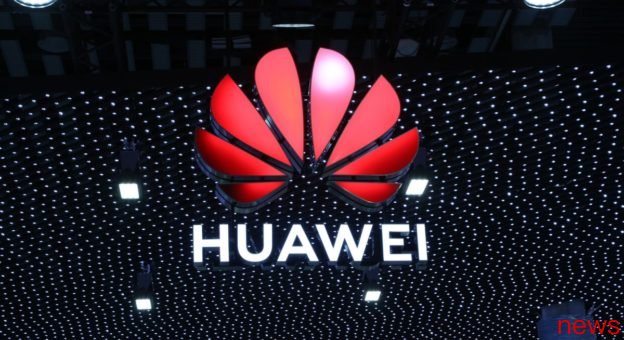
According to the Korean media The ELEC, the latest survey data shows that China directly or indirectly operates at least 11 semiconductor crystalline factories in the country. If the R&D (R&D) crystalline factories are also included, the total number is nearly 20.
Water is a crystalline manufacturer that covers memory, system semiconductors and crystalline foundry production lines, indicating that China has quickly become a vertically integrated semiconductor enterprise (IDM), and has become the ambitions of "Chinese version of Samsung Electronics" and "Chinese version of Intel".
Hua is a seven subsidiaries that operate a total of 11 crystal factories.Hua has been stepping up the IDM war since the US sanctions on China's semiconductor industry in 2019, and has developed more rapidly with the support of the Chinese government. According to many market insiders, there are seven semiconductor companies that directly or in-connected, and have mastered at least 11 crystalline factories. The company has various main products, such as crystal foundry, DRAM, Internet of Things (IoT) chips and mobile device chips.
Hua directly or indirectly controls semiconductor enterprises in many cities in China, such as Qingdao SiEn, Dongguan Guangmao Technology (DGGMT), Shenzhen Zixun Technology (PXW), Shenzhen Zixun Micro Integrated Circuit (PST), Shenzhen Sheng Weixun Technology (SWX), Qingdao Technology (PJHT), Fujian Xianhua Technology (JHICC). Most of the Chinese government has a shareholding. Qingdao Xinen Integrated Circuit Shareholder is a state-owned enterprise under the State-owned Assets Supervision and Administration Committee of the State-owned Assets Supervision and Administration Commission of Qingdao Municipal Institute. Dongguan Guangmao Technology's shares are affiliated to the National Assets Supervision and Administration Committee of Dongguan National Institute of State.
The shares of Shenzhen Lingxin Micro Integrated Circuit, Lingxinxu Technology, Shengweixu Technology and other companies are held 100% by Shenzhen Major Industry Investment Group and are supervised by Shenzhen Shenzhen Major Industry Investment Group. They are responsible for investing and managing strategic industries such as semiconductors, artificial intelligence, and advanced manufacturing. Despite this equity structure, the industry generally believes that the actual leader of these crystalline factories is Hua.
Secretly controlled wafers reach 20 units, and IDM mode is designedIndustry insiders pointed out that these companies are considered to be China, and even employees are circulating on business terms. In order to choose to use a company name that is not directly related to it, China is to become a semiconductor enterprise that seems to have no relationship with China, and to establish a semiconductor ecosystem with a secret. These companies may even change their company names due to changes in investment and equity structure.
These companies have 11 crystalline factories, at least five of which can produce advanced processes below 7 nanometers, such as Qingshima Xinen Integrated Circuit, Dongguan Guangmao Technology, Shenzhen Zixin Micro Integrated Circuit, Zixinxu Technology, Sheng Weixu Technology, etc. Five advanced process crystal factories, Shenzhen Lengxinxu has the largest scale and was founded by Hua for a high-level.
Shengwei Asahi Crystal Factory mainly manufactures DRAM, and its former executive is the late Japanese Albida president Yukio Sakamoto. It is said that the Chinese semiconductor crystal circular factory directed by the British financial reporting period is the Shengweixu crystal circular factory. According to Baidu Satellite Photo Proof, Shengweixu may have three crystalline factories, one of Shenzhen Xinkai, a equipment company that only uses Huawei as an investment, but does not have foreign equipment. The Qingshima Xinen integrated circuit chip factory, mainly produced by Zhang Rujing, who created SMIC International, was founded by Zhang Rujing. In addition, Shenzhen Yuxin Micro Integrated Circuit and Dongguan Guangmao Technology Crystal Factory use the production of mobile device chips as the main products.
The report quoted industry insiders that there are five crystalline factories under the Qingdao Xinen Integrated Circuit, two Shenzhen Zixin Micro Integrated Circuit and Zixinxu Technology, a total of nine. Eight seats can produce 12-inch crystal circles, and one seat can produce 8-inch crystal circles. In addition to the crystal factory, China also set up a large-scale R&D center, and eight institutions have ten R&D centers. These R&D centers are large in size and are difficult to purely consider as experimental facilities. Dongguan Facilities A is divided into three stages according to the completion period, and the investment amount in the third stage is about 6 trillion Korean circles. Facilities B has six buildings. According to the industry, facilities A and B may have mass production capabilities.
The support of the Chinese government's big fund is to follow the Internet equipment and take the lead.Hua's investment scale will be further expanded, as the Chinese government established three major fund funds of RMB 34.4 billion in 2024, which is comparable to the total investment of the first and second phases of the major funds in the previous decade.
The Korean Chinese Expert Forum (CSF) report in October 2023 pointed out that as of the first half of 2023, China invested in 79 companies for investment company Hubble Technology and Shenzhen Hubble Technology, focusing on chip design, wired wireless transmission chips, sensor chips, etc. CSF believes that in order to increase comprehensive investment in semiconductor ecosystems, the ultimate goal is to establish an IDM structure to achieve vertical integration of semiconductor supply chains.
Ware previously a behind-the-scenes industry market, it has followed Cisco, Elisson, Nokia, etc., ranking first in the world, and has benefited from large-scale investment, leading technology and high-quality price ratios. With the support of the Chinese government's large fund, China will be attracting market attention to whether it can re-sume the semiconductor market.